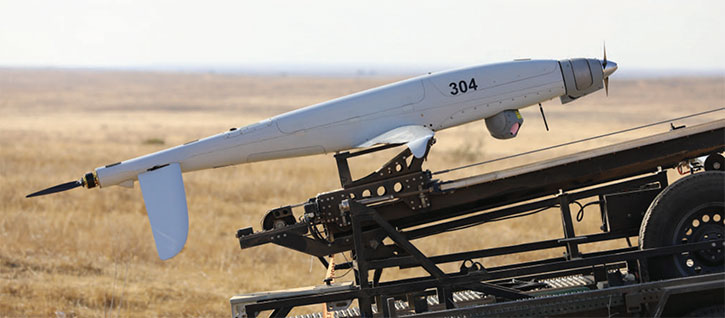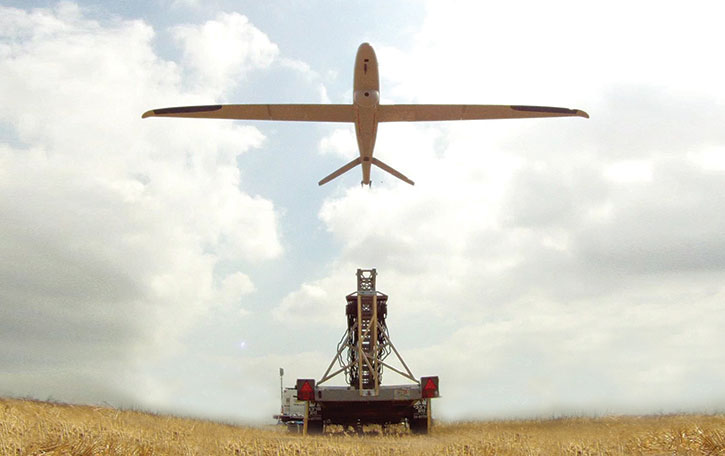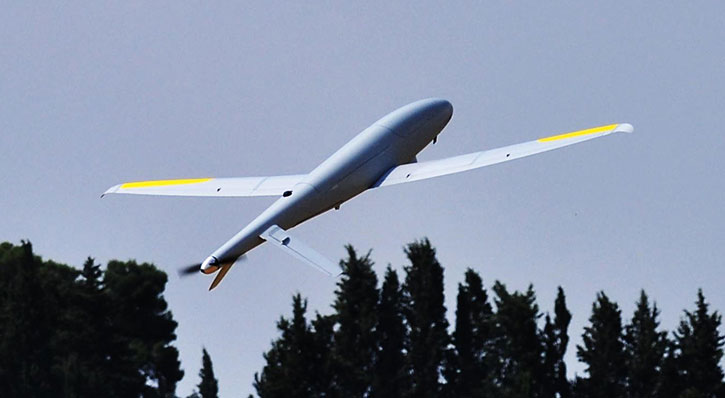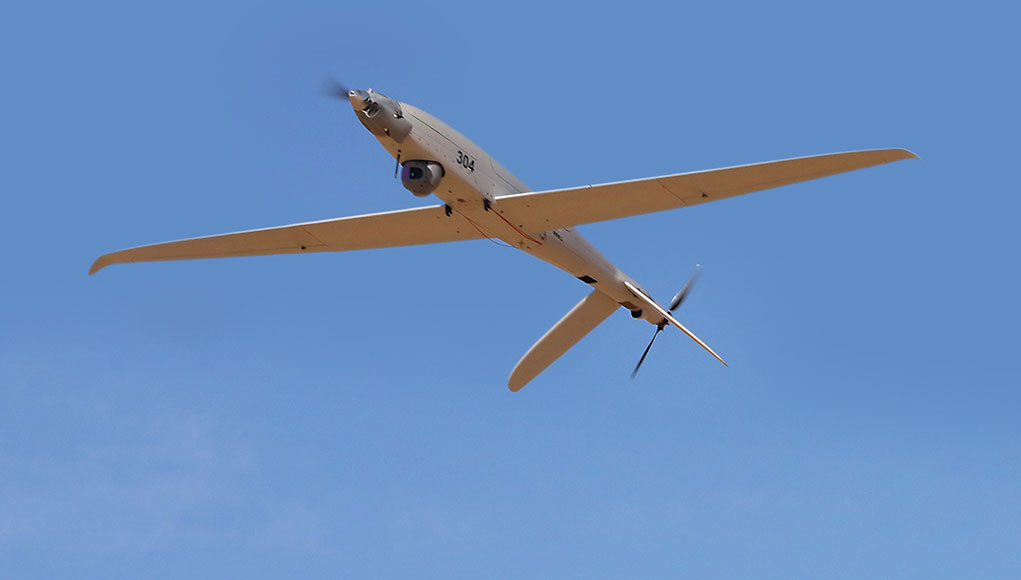Elbit Systems unveiled today a new version of its Skylark 3 Small Tactical Unmanned Aerial Systems (STUAS) equipped with a hybrid propulsion system. As the classic Skylark 3, the drone is a covert operation UAS. [playht_player width=”100%” height=”90px” voice=”en-US-JennyNeural”]The hybrid propulsion system is designed to enable fast arrival to the Area Of Interest (AOI) using the combustion engine. When operating in the area of interest, the silent mode (electrical engine) can be activated. Therefore, it enables the combination of long-endurance operations while providing real-time, day, and night intelligence.
According to the company, the use of a battery-powered electric engine with an internal combustion engine using heavy-fuel triples the endurance and offers up to 18 hours of operations. The propulsion system is fully integrated into the airframe, retaining the size or weight, significantly increasing mission effectiveness and cost-efficiency.
The classic Skylark 3 uses a battery-powered electrical motor coupled to a pusher propeller. The new hybrid model adds a fuel-efficient internal combustion engine in the front. The use of a battery-powered electrical engine minimizes the acoustic and thermal signature. In addition to the gains in endurance and silent operation, the twin-engine architecture also improves flight safety by redundancy, as the two motors are independent of each other, thus enabling one engine to back up the other.

The higher endurance of the Skylark 3 Hybrid increases the drone’s loitering time above AOI thus requiring fewer platforms per mission. Two Skylark 3 Hybrid STUAS can be assigned to the same mission simultaneously managed by a shared ground control station. The drone is operated by a crew of two, it is launched via a pneumatic launcher that can be mounted on a vehicle or vessel. The Skylark 3 is retrieved by parachute at a pre-designated landing area.

Skylark 3 Hybrid has a 4.7m wingspan, a maximum takeoff weight of 50kg, a service ceiling of 12,000ft, and a range of 120km. It features dual payload capacity with a “plug&play” interface for a quick replacement of sensors in the field. The Skylark 3 Hybrid is capable of integrating a range of payloads including high-resolution Electro-Optical gimbaled payload, ELINT, COMINT, and laser designators, among others.
[playht_listen_button inline=”yes” tag=”p”]Elbit System is displaying the Skylark 3 Hybrid for the first time at the Singapore Airshow 2022.

The Skylark 3 can also be configured with the new, wide-area persistent intelligence (WAMI) gathering system, the MiniSkEye payload, designed for light platforms. Subscribe to read the full review




















